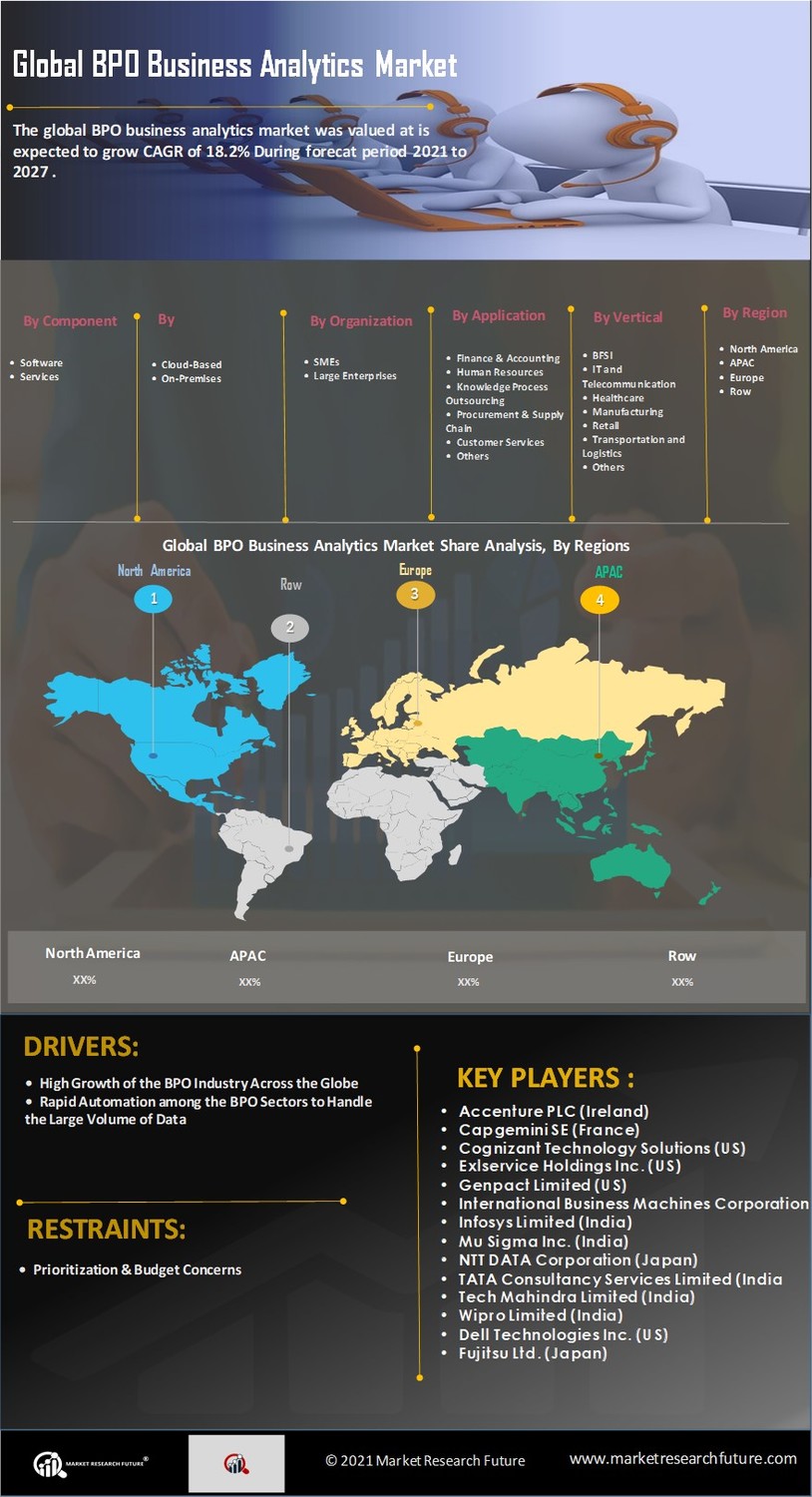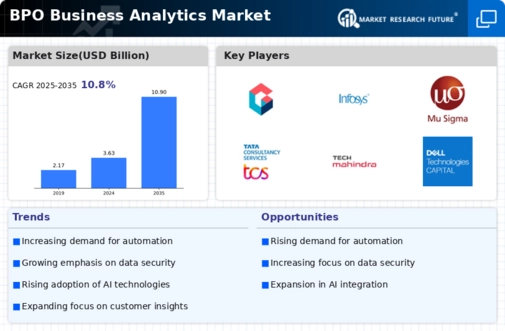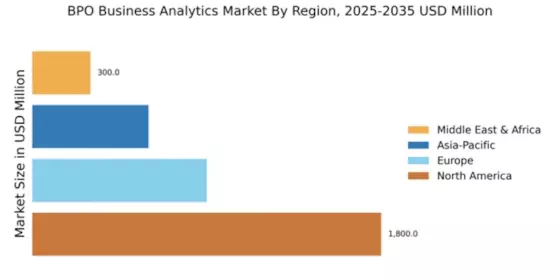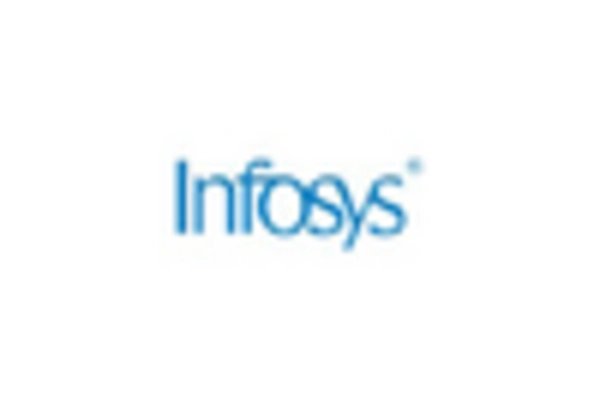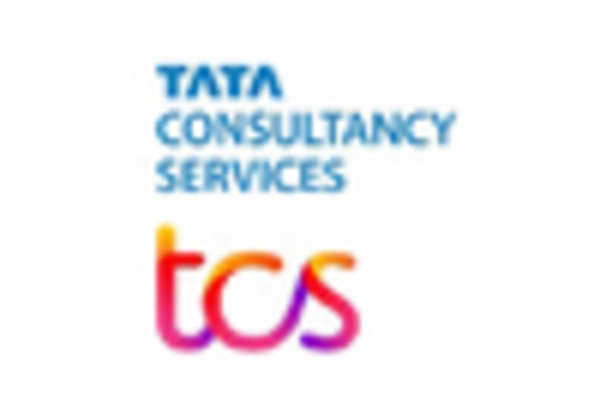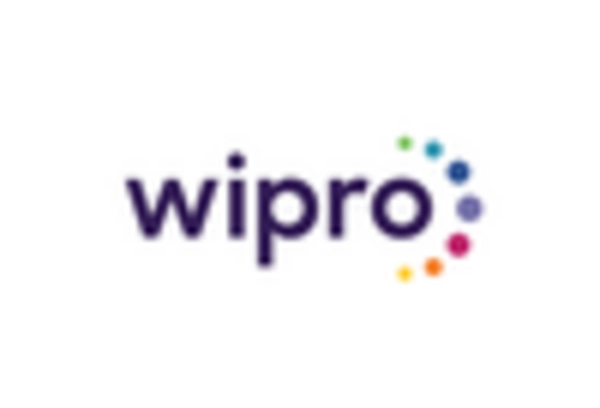Market Growth Projections
The Global BPO Business Analytics Market Industry is projected to experience substantial growth in the coming years. With a market value expected to reach 3.63 USD Billion in 2024 and potentially 10.9 USD Billion by 2035, the industry is on a trajectory of significant expansion. The compound annual growth rate of 10.47% from 2025 to 2035 indicates a robust demand for analytics solutions across various sectors. This growth is driven by the increasing reliance on data analytics for informed decision-making, operational efficiency, and enhanced customer experiences. The market's upward trend suggests a promising future for businesses investing in analytics.
Globalization and Market Expansion
Globalization has a profound impact on the Global BPO Business Analytics Market Industry, as companies seek to expand their operations across borders. The need for analytics becomes increasingly critical in understanding diverse markets and consumer behaviors. Organizations are leveraging analytics to identify growth opportunities and optimize their strategies in various regions. This trend is likely to drive market growth, as businesses require insights to navigate complex global landscapes. The anticipated compound annual growth rate of 10.47% from 2025 to 2035 indicates a robust demand for analytics services in the context of globalization.
Increased Focus on Customer Experience
The Global BPO Business Analytics Market Industry is significantly influenced by the heightened focus on customer experience. Businesses are recognizing that understanding customer behavior and preferences is crucial for maintaining competitiveness. By utilizing analytics, organizations can tailor their services and products to meet customer needs more effectively. This shift is driving investments in analytics solutions that provide insights into customer interactions and satisfaction levels. As companies strive to enhance customer experiences, the demand for analytics services is expected to grow, contributing to the overall expansion of the market.
Regulatory Compliance and Risk Management
Regulatory compliance and risk management are vital drivers of the Global BPO Business Analytics Market Industry. As businesses face increasing scrutiny from regulatory bodies, the need for effective analytics solutions to ensure compliance is paramount. Organizations are utilizing analytics to monitor and manage risks associated with regulatory changes, thereby safeguarding their operations. This trend is likely to propel the demand for analytics services, as companies seek to mitigate risks and maintain compliance. The growing emphasis on risk management suggests a sustained need for analytics in various industries, further contributing to the market's expansion.
Rising Demand for Data-Driven Decision Making
The Global BPO Business Analytics Market Industry experiences a substantial increase in demand for data-driven decision-making processes. Organizations across various sectors are increasingly leveraging analytics to enhance operational efficiency and improve customer experiences. This trend is evidenced by the projected market value of 3.63 USD Billion in 2024, reflecting a growing recognition of the importance of data insights. Companies are investing in advanced analytics tools to gain competitive advantages, streamline operations, and make informed strategic decisions. As businesses continue to prioritize data analytics, the Global BPO Business Analytics Market Industry is poised for significant growth.
Technological Advancements in Analytics Tools
Technological advancements play a pivotal role in shaping the Global BPO Business Analytics Market Industry. The emergence of artificial intelligence, machine learning, and big data analytics has revolutionized how businesses analyze and interpret data. These innovations enable organizations to process vast amounts of information quickly and derive actionable insights. As a result, companies are increasingly adopting sophisticated analytics tools to enhance their decision-making capabilities. The continuous evolution of technology suggests that the market will expand, potentially reaching a value of 10.9 USD Billion by 2035. This growth underscores the importance of staying abreast of technological trends in the analytics domain.
